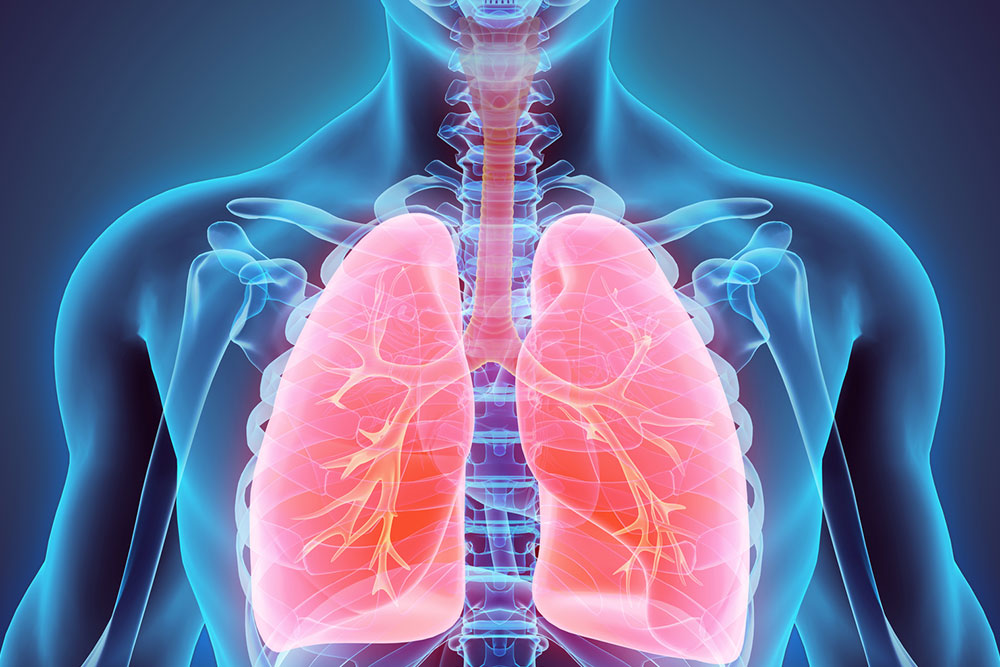Comprehensive Treatment Approaches for Advanced Non-Small Cell Lung Cancer: A Stage-Wise Guide
This comprehensive guide explores stage-specific treatment strategies for advanced non-small cell lung cancer (NSCLC). Covering early detection, surgical options, targeted therapies, and emerging treatments like immunotherapy, the article emphasizes personalized care to maximize survival and quality of life. It provides detailed insights into each disease stage, highlighting the importance of multidisciplinary approaches and latest innovations in lung cancer treatment. Ideal for patients, caregivers, and healthcare professionals, this article aims to inform and empower those confronting NSCLC at various stages.

Comprehensive Treatment Approaches for Advanced Non-Small Cell Lung Cancer: A Stage-Wise Guide
Non-small cell lung cancer (NSCLC) is one of the most common types of lung cancer, accounting for approximately 85% of cases worldwide. When diagnosed at advanced stages, it becomes significantly more challenging to treat effectively. The prognosis and treatment options for NSCLC heavily depend on the cancer's stage at diagnosis. As the cancer progresses, treatment strategies evolve to address the extent of spread, with options ranging from surgical interventions to targeted therapies and supportive care. This comprehensive guide aims to provide an in-depth overview of treatment methods tailored to each stage of advanced NSCLC, highlighting the importance of early detection, personalized treatment plans, and ongoing research in this field.
Understanding the stage-specific treatments for NSCLC allows patients, caregivers, and healthcare professionals to make informed decisions, optimize treatment efficacy, and improve quality of life. Below, we delve into the detailed treatment options associated with each stage of disease progression, emphasizing the advancements and innovations shaping current clinical practices.
Stage 0: Early-Stage Non-Invasive Lung Cancer
Stage 0 NSCLC, also known as carcinoma in situ, represents the earliest form of lung cancer where the abnormal cells are confined to the lining of the airways and have not invaded the surrounding lung tissues. Because it is limited to the airway lining, the chances of successful treatment are high when detected early.
Treatment options at this stage prioritize precision removal and local control. Surgical resection remains the most effective method, often involving procedures like endobronchial resection or wedge resection, aiming to eliminate all abnormal cells. Alternative modalities include Photodynamic Therapy (PDT), which uses a photosensitizing agent activated by special light to destroy cancer cells, and laser ablation, which involves high-energy beams targeting the abnormal tissue. Internal radiation, also known as brachytherapy, may be used to deliver localized radiation directly to the affected area, sparing healthy lung tissue and minimizing side effects.
Early detection at this stage dramatically improves outcomes, underscoring the importance of screening high-risk populations, such as long-term smokers or those with a family history of lung cancer.
Stage I: Small but Invasive Tumors
Stage I NSCLC involves small tumors that have begun to invade the lung tissue but have not spread to lymph nodes or distant sites. Surgical removal is the standard of care, typically involving lobectomy — the removal of a lobe of the lung — which offers the highest chance of cure. For patients unable to undergo surgery due to health issues, stereotactic body radiation therapy (SBRT) offers a non-invasive yet highly precise alternative, delivering high doses of radiation to targeted tumors in a few sessions.
In some cases, radiofrequency ablation (RFA) is employed, especially for small peripheral tumors that are near the lung’s outer edges. RFA uses heat generated by electrical currents to destroy cancer cells with minimal damage to surrounding tissues. After surgery or high-precision radiation, adjuvant therapies such as chemotherapy or radiation therapy may be recommended to target any residual microscopic disease and reduce the risk of recurrence.
Stage II: Locally Advanced Tumors
At Stage II, NSCLC tumors are larger or may have spread to nearby lymph nodes within the lung or surrounding mediastinal area. Treatment complexity increases, often requiring a multidisciplinary approach. Surgical options such as lobectomy, pneumonectomy (removal of the entire affected lung), or sleeve resection (removing part of a bronchus and reconnecting it) are considered based on tumor size and location.
Preoperative chemotherapy or radiation may be administered to shrink tumors, making them more amenable to complete surgical removal. Postoperative adjuvant chemotherapy or radiation therapy is critical in eliminating residual disease, improving long-term survival, and reducing recurrence chances. Advances in imaging and molecular diagnostics enable better patient stratification, ensuring therapies are tailored to the tumor's genetic profile for more effective outcomes.
Stage IIIA: Locally Advanced with Lymph Node Involvement
In Stage IIIA NSCLC, the cancer has spread to nearby lymph nodes or invaded neighboring tissues, but it has not yet disseminated to distant sites. The treatment paradigm here involves a combination of chemotherapy and radiation therapy, often administered sequentially or concurrently, to control local disease and attempt to improve resectability.
Surgical intervention can be considered if the patient is fit, either before or after chemoradiation, to remove residual tumor and affected lymph nodes. The goal is multidisciplinary: combining surgery, chemotherapy, radiation, and potentially targeted therapy or immunotherapy based on molecular markers. Advances in immunotherapies, like immune checkpoint inhibitors, have shown promise in improving survival rates for certain patients within this stage, especially when combined with traditional treatments.
Stage IIIB: Extensive Locally Advanced Disease
At this stage, tumors are larger with involvement of mediastinal vessels, contralateral lymph nodes, or adjacent structures, making surgical resection generally unfeasible. The focus shifts to systemic and radiation-based therapies. For suitable candidates, a combination of chemotherapy and radiation therapy (chemoradiation) is the gold standard, aiming to control symptoms and prolong survival.
Selected patients might participate in clinical trials exploring intensified treatment regimens, including immunotherapy agents or new targeted therapies. In cases where patients are not candidates for aggressive combined therapy, options include radiation alone or systemic chemotherapy, with palliative care aimed at symptom relief and quality-of-life improvement.
Stage IV: Advanced Distant Metastatic Disease
Stage IV NSCLC signifies that the cancer has spread beyond the lungs to distant organs such as the brain, liver, bones, or adrenal glands. Because of widespread dissemination, curative treatment is rarely possible at this point. Instead, the focus is on extending survival, managing symptoms, and maintaining the patient’s quality of life.
Therapeutic options include chemotherapy, which remains a cornerstone, as well as targeted therapies for tumors with specific genetic mutations (like EGFR, ALK, ROS1). Immunotherapies, such as PD-1 or PD-L1 inhibitors, have revolutionized treatment, offering durable responses in some patients. Supportive treatments like laser therapy, photodynamic therapy (PDT), and palliative surgeries can help alleviate symptoms caused by tumor growth, such as bleeding or airway obstruction.
Clinical trials continue to explore novel therapies and combinations that might improve outcomes in metastatic disease, highlighting ongoing optimism in this challenging clinical area.





